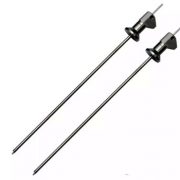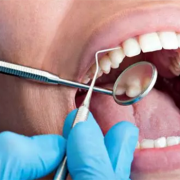Is 304 stainless steel medical grade?
Compared with industrial stainless steel, medical stainless steel has more strict requirements on chemical composition because of its main properties of reducing metal ion dissolution and avoiding local corrosion such as intergranular corrosion and stress corrosion. The content of alloy elements such as Ni and Cr is higher than that of ordinary stainless steel (usually the upper limit of ordinary stainless steel), while the content of impurity elements such as S and P is lower than that of ordinary stainless steel. For years, medical stainless steel has been the preferred material for surgical applications, especially in critical care and surgery situations. The element Ni and Cr feature higher corrosion-resisting, which allows it to be used for purposes where orthopedic implants, oral cavity, medical devices are required. Stainless steel, a type of Ni-Cr alloys, offering a variety of benefits when compared with general grade stainless steel. The type of alloy used in medical stainless steel used in surgical instruments is crucial to the instrument’s ability to resist corrosion and remain free of internal errors and gaps.
Many stainless steels can be used for medical purposes, the most common of which is Austenitic 316 (AISI 316L), known as “surgical steel”. AISI 301 is the most commonly used metal for the manufacture of medical springs. Other commonly used stainless steels for medical use include 420, 440, and 17-4PH. These Martensitic stainless steels are not as resistant to corrosion as Austenitic stainless steels 316, but they have higher hardness. Therefore, Martensitic stainless steel plants are used for cutting tools or other non-implant devices. The gains elasticity in cold work but loses corrosion resistance. Medical stainless steel has achieved widespread popularity due to its unmatched durability, heat treatment resistance, surgical functionality, and corrosion resistance. It is used in a variety of applications including hospital seating frames, cradles, end plates, surgical gloves, IV poles, and staples. Due to its extreme resilience and the need for its use in specialty applications, it is imperative that manufacturers using this grade of stainless steel pay close attention to quality control and manufacturing specification. The most popular medical stainless steel used in the manufacture of surgical instruments are 304 and 316. However, the best alloys feature a lower carbon content and Mo added like 316L and 317L steel.
304 stainless steel, namely 18-8 stainless steel, 304 series stainless steel also includes lower carbon 304L, 304H for heat-resistant purposes, there is a question, 304 stainless steel can be used for medical purposes? There is a fact that in 1926,18% CR-8% Ni stainless steel (AISI 304) was first used as an orthopedic implant material and later in stomatology. It was not until 1952 that AISI 316 stainless steel containing 2%Mo was used in the clinic and gradually replaced 304 stainless steel. In order to solve the intergranular corrosion problem of stainless steel, in the 1960s, the ultra-low carbon stainless steel AISI 316L and AISI 317L with good biocompatibility, mechanical properties and better corrosion resistance began to be used in the medical field. However, Ni is a potential sensitization factor to the human body. In recent years, many countries have limited the content of Ni in daily necessities and medical metal materials, and the maximum allowable Ni content is becoming lower and lower. The Standard 94/27/EC of the European Parliament promulgated in 1994 requires that the Ni content in the materials implanted in the human body (implant materials, orthodontic dentures, etc.) should not exceed 0.105%; For metal materials (jewelry, watches, rings, bracelets, etc.) that are exposed to human skin for a long time, the maximum amount of Ni should not exceed 015Lg/cm2 per week. Today 304 is still used in the manufacture of common medical instruments such as syringes, medical scissors, tweezers, and scalpel series.







